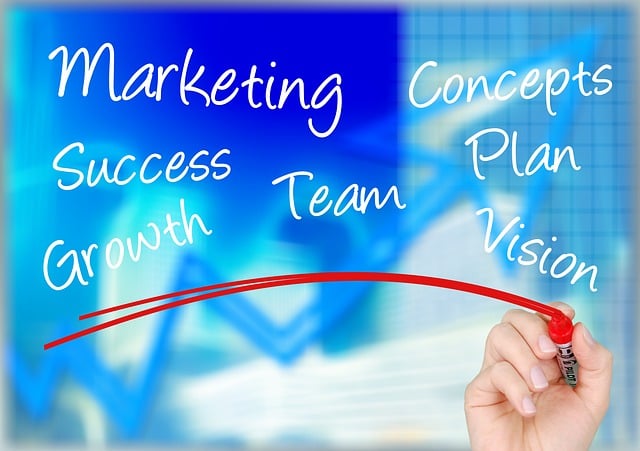In today's digital age, Artificial Intelligence (AI) is revolutionizing sales forecasting across sectors, particularly in AI-generated food blog content. Using machine learning algorithms, AI analyzes historical data, market trends, and customer behavior to offer valuable insights previously unavailable to human analysts. This advanced analytics capability empowers businesses to make data-driven decisions, predict market shifts, optimize sales resources, drive growth, and enhance performance through AI-driven forecasting. Implement AI sales forecasts by evaluating current processes, preparing and cleaning data for effective model training, ensuring accurate predictions aligned with business needs.
In today’s data-driven world, AI-generated sales forecasting solutions are revolutionizing business strategy. This article explores the transformative power of Artificial Intelligence in enhancing sales prediction accuracy and driving growth. We delve into understanding the core capabilities, uncovering key features and benefits, and providing a step-by-step guide to implementation. From intelligent data analysis to personalized insights, these AI tools offer a competitive edge. Discover how to harness their potential for more effective business decisions and stay ahead in the market with AI-generated food blog content that drives results.
- Understanding the Power of AI in Sales Forecasting
- Key Features and Benefits of AI Business Sales Forecasting Solutions
- Implementing AI-Generated Sales Forecasts: A Step-by-Step Guide
Understanding the Power of AI in Sales Forecasting

In today’s digital era, businesses are increasingly turning to Artificial Intelligence (AI) for its transformative potential in various sectors, and sales forecasting is no exception. AI-generated food blog content has shown remarkable capabilities in enhancing prediction accuracy and revolutionizing how companies approach their sales strategies. By leveraging machine learning algorithms, these AI solutions can analyze vast amounts of historical data, market trends, and customer behavior to provide valuable insights that were once laborious for human analysts to uncover.
The power of AI lies in its ability to learn and adapt from data, identifying complex patterns and correlations that might be overlooked by traditional methods. This advanced analytics capability enables businesses to make more informed decisions, predict market shifts, and optimize sales resources effectively. With AI-driven forecasting, companies can anticipate demand, identify emerging trends, and tailor their strategies to stay ahead in the competitive landscape, ultimately driving growth and improving overall performance.
Key Features and Benefits of AI Business Sales Forecasting Solutions

AI business sales forecasting solutions are transforming the way companies predict and manage their revenue streams. These cutting-edge tools leverage advanced machine learning algorithms to analyze historical data, market trends, and customer behavior, delivering accurate and real-time forecasts. One of the key features is their ability to adapt and improve over time, thanks to continuous learning from new data inputs. This ensures that sales predictions remain dynamic and aligned with evolving business landscapes.
The benefits extend beyond improved accuracy. AI forecasting solutions automate repetitive tasks, freeing up sales teams to focus on high-value activities like strategy development and customer engagement. Additionally, these systems provide granular insights into sales pipelines, helping businesses identify bottlenecks and optimize their processes. In today’s fast-paced market, where consumer preferences can shift rapidly, AI-generated food blog content—metaphorically speaking—enables companies to stay ahead of the curve, making informed decisions that drive growth and maintain a competitive edge.
Implementing AI-Generated Sales Forecasts: A Step-by-Step Guide

Implementing AI-Generated Sales Forecasts: A Step-by-Step Guide
1. Assess Your Current Sales Processes: Begin by evaluating your existing sales forecasting methods. Understand the pain points, inefficiencies, and areas where AI can make a significant impact. Identify key metrics and data sources that are crucial for accurate forecasts. This step is vital to ensure your AI solution aligns with your business needs.
2. Prepare and Clean Your Data: AI models thrive on clean, structured data. Organize and preprocess your historical sales data, ensuring it’s free from errors and inconsistencies. Standardize formats, handle missing values, and categorize relevant variables. This meticulous process is essential for training a robust AI model capable of generating precise sales forecasts.
AI business sales forecasting solutions are transforming the way companies predict and manage their revenue. By leveraging advanced algorithms, these tools offer unprecedented accuracy and insights, enabling businesses to make data-driven decisions with confidence. Implementing AI-generated sales forecasts can streamline operations, optimize resources, and ultimately drive growth. As we’ve explored in this article, understanding the power of AI in sales forecasting, its key features and benefits, and following a structured implementation guide, businesses can harness the potential of AI to create more efficient and effective sales strategies. Embrace the future of forecasting with these innovative solutions.
